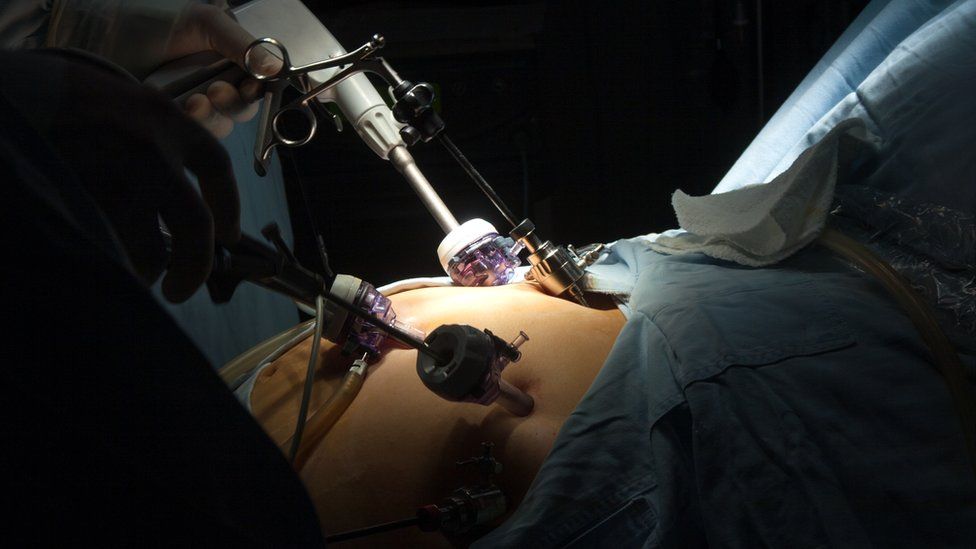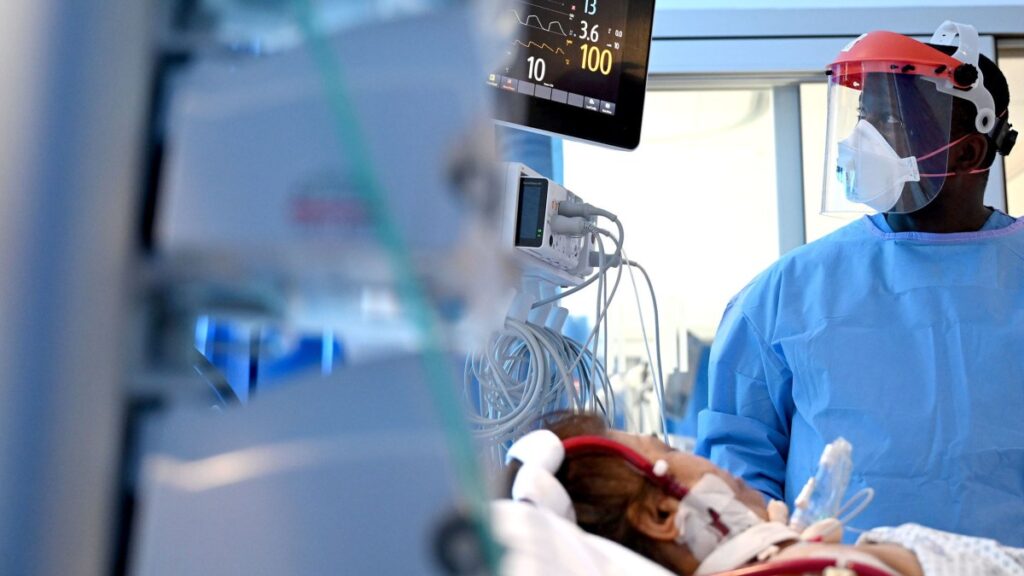Some surgeries, like Hyperthermic Intraperitoneal Chemotherapy (HIPEC) for abdominal cancers or aortic aneurysm repair, can last for 10 hours or more due to their complexity. HIPEC involves removing tumors from the abdomen and bathing them in heated chemotherapy to target the remaining cancer cells.
Moreover, aortic aneurysm repair is a delicate procedure aimed at fixing weak spots in the main artery. These surgeries demand meticulous attention to detail and precision from the surgical team, as any mistake could have serious consequences.
Factors such as the extent of the condition, patient health, and surgical techniques contribute to the lengthy duration. Despite the duration, these surgeries offer hope for patients facing serious medical conditions.
What Are The Factors Influencing Surgery Duration?

The length of a surgical procedure can vary greatly, ranging from a quick in-office procedure to complex operations lasting an entire day or even longer. Several factors contribute to how long surgery takes, and understanding these factors can help set realistic expectations for patients and surgeons alike. Here’s a breakdown of some key influences:
Procedural Complexity
Open surgeries, requiring large incisions and direct manipulation of organs, generally take longer than minimally invasive procedures like laparoscopy or robotic surgery.
The amount of tissue removed (e.g., tumor resection) or the complexity of tissue repair (e.g., microsurgical reconstruction) significantly impacts duration.
Surgeons often encounter unexpected situations during surgery, like scar tissue from previous procedures or anatomical variations, requiring adjustments and potentially extending the timeframe.
Patient-Related Factors
A patient’s pre-operative health status, including presence of chronic conditions or previous surgeries, can influence surgery duration. Patients with weaker health may require additional monitoring or adjustments during the procedure.
A patient’s body size and specific anatomy can affect surgical difficulty. Surgeons may need to employ different techniques or take extra time to ensure proper access and maneuverability in the operating field.
Surgical Team Dynamics
A surgeon’s experience and skill level play a crucial role in efficiency. Highly skilled surgeons can often perform complex procedures more quickly while maintaining safety and precision.
A well-coordinated surgical team with clear communication can streamline the process, minimizing delays and optimizing efficiency. Conversely, communication breakdowns or team member inexperience can lead to extended operating times.
Other Factors
The chosen type of anesthesia and the patient’s response to it can influence surgery duration. If significant blood loss is anticipated, ensuring the availability of blood products beforehand can prevent delays during surgery.
While not directly influencing surgical technique, factors like room availability and scheduling constraints can impact overall procedure duration.
What Are The Types of 10-Hour Surgeries?

Surgeries come in all shapes and sizes, with durations ranging from a quick outpatient procedure to complex operations lasting an entire day. Today, we’ll focus on those intricate surgeries that can push the boundaries of time, specifically those extending for 10 hours or more.
Here’s a breakdown of some prominent examples and the factors contributing to their lengthy nature:
Hyperthermic Intraperitoneal Chemotherapy (HIPEC)
Primarily used for treating abdominal and pelvic cancers, like ovarian cancer or appendix cancer.
Procedure
- Cytoreduction: The surgeon meticulously removes all visible tumors and cancerous tissues within the abdominal cavity.
- Heated Chemotherapy: Following cytoreduction, a heated chemotherapy solution is circulated directly throughout the abdomen, maximizing its effectiveness on remaining microscopic cancer cells.
- Reconstructive Surgery (if needed): Depending on the extent of tissue removal, reconstructive procedures might be necessary to restore abdominal function.
The meticulous removal of tumors and the complex process of heating and circulating the chemotherapy solution contribute significantly to the extended surgery time.
Aortic Aneurysm Repair
Corrects a potentially life-threatening bulge (aneurysm) in the aorta, the body’s main artery.
Procedure
There are two primary approaches:
- Open Repair: Requires a large abdominal incision to access the aorta. The surgeon removes the weakened section and replaces it with a synthetic graft.
- Endovascular Aortic Repair (EVAR): A minimally invasive technique involving inserting a stent graft through a smaller incision in the groin or leg to reinforce the weakened area.
Open repair is a highly complex surgery due to the aorta’s critical role. EVAR, while minimally invasive, can be time-consuming when dealing with complex aneurysms or challenging anatomy.
Complex Spine Surgery
Addresses a wide range of spinal problems, from severe fractures and deformities to tumors or infections.
Procedure: This varies greatly depending on the specific issue. Often involves:
- Extensive exposure: Surgeons may need to meticulously remove muscle and bone to access the affected area of the spine.
- Implantation of hardware: Devices like rods, screws, or cages might be used to stabilize and support the spine.
- Fusion procedures: Promoting the bones to heal together permanently for added stability.
The intricate nature of the spine, coupled with the need for precision and delicate manipulation of nerves and blood vessels, necessitates a slow and meticulous approach.
Microvascular Reconstructive Surgery
Restores form and function in various situations, including Breast reconstruction following mastectomy. Facial reconstruction after trauma or tumor removal. Limb salvage surgery to avoid amputation.
Procedure: Requires exceptional surgical skill and involves:
- Microsurgical techniques: Utilizing specialized instruments and magnification to work with tiny blood vessels and nerves for tissue transfer.
- Flap reconstruction: Transferring healthy tissue from another part of the body to the reconstruction site.
The delicate nature of microsurgery, with meticulous stitching of blood vessels barely thicker than a thread, demands extreme focus and precision, leading to extended operating times.
It’s important to remember that this is not an exhaustive list. Other complex surgeries, particularly cancer resections involving multiple organs, or procedures addressing intricate neurological issues, can also necessitate extended operating times exceeding 10 hours.
Preoperative Preparation for Lengthy Surgeries: Optimizing Your Outcome
Undergoing a lengthy surgery, lasting 10 hours or more, requires meticulous planning and preparation beyond the usual surgical procedures. Here’s a comprehensive guide to ensure you’re well-prepared for a successful outcome:
Medical Optimization
Before surgery, your doctor and possibly an anesthesiologist will do a thorough check-up to ensure everything goes smoothly. They’ll ask about your medical history, any medications you take, and past surgeries.
A physical exam will also be done to see how fit you are for surgery. You might need blood tests or scans to check for any issues.
Sometimes, your medications might need adjusting beforehand. If you have conditions like diabetes or heart problems, they’ll make sure these are well-managed. Eating right is crucial too, so you might get advice on what to eat or supplements to take for better healing.
Physical Preparation
Staying active with exercises recommended by your doctor can help you feel stronger and recover faster after surgery. If you smoke, quitting at least 8 weeks before surgery is crucial because smoking slows down healing and raises risks.
Also, if you’re overweight, shedding some pounds before surgery can lead to better results and fewer problems afterward. These lifestyle changes may seem small, but they can make a big difference in how well you do during and after your surgery.
Logistics and Support System
Arrange reliable transportation for both arrival and departure from the hospital after surgery. Discuss discharge plans with your doctor, including any necessary home care or rehabilitation needs.
Having a reliable support system for family or friends is crucial. They can assist with transportation, errands, and emotional support throughout the process.
Ensure you have all necessary paperwork, insurance information, and medication lists readily available.
Psychological Preparation
Educate yourself about the surgery, potential risks, and expected recovery timeline. Knowledge empowers you to ask informed questions and manage expectations.
Lengthy surgeries can be emotionally taxing. Talk to your doctor about managing anxiety through relaxation techniques, meditation, or seeking support from a therapist. Maintaining an optimistic outlook can significantly influence your recovery process.
Specific Considerations for Long Surgeries
Due to the extended duration, a more detailed surgical plan may be established, outlining each step of the procedure and potential contingencies. For surgeries with anticipated blood loss, your doctor may plan for blood product availability beforehand.
A comprehensive pain management plan will likely be established to address potential discomfort during the extended recovery period.
Intraoperative Challenges and Complications

Even the most meticulously planned surgery can encounter unforeseen hurdles. Here’s an overview of some common intraoperative challenges and complications that surgeons strive to anticipate and manage:
Anesthesia-Related Challenges
Securing an airway for breathing can be challenging due to anatomical variations, inflammation, or prior surgeries in the airway. Anesthesia medications can trigger allergic reactions, ranging from mild skin rash to life-threatening anaphylaxis.
Fluctuations in blood pressure, heart rate, or rhythm can occur during surgery and require immediate intervention.
Surgical Challenges
Excessive bleeding can complicate surgery, requiring blood transfusions and potentially delaying the procedure.
Every patient’s anatomy is unique. Surgeons may encounter unexpected variations in blood vessel location, organ positioning, or scar tissue from previous procedures, necessitating adjustments to the surgical plan.
While uncommon, malfunctioning surgical equipment can necessitate delays or require alternative techniques.
Complications
Despite stringent sterile techniques, there’s always a risk of surgical site infections. Inadvertent injury to surrounding organs or blood vessels can occur during complex surgeries.
Blood clots can form in the legs during prolonged surgeries, potentially leading to pulmonary embolism (blood clots in the lung).
Mitigating Challenges and Complications
A skilled surgeon with extensive experience can anticipate potential challenges, adapt to unexpected situations, and minimize complications.
Thorough preoperative planning, including detailed imaging studies and clear communication within the surgical team, is crucial for anticipating and addressing potential issues.
Technological advancements like laparoscopic surgery or robotic-assisted surgery can minimize tissue manipulation and bleeding, potentially reducing complication rates.
Experienced surgical teams have contingency plans in place to address common challenges and manage complications effectively.
FAQ’s
What surgery takes 11 hours?
Cytoreduction, a complex procedure often used for mesothelioma treatment, typically lasts between 10 to 12 hours. Patients may be admitted to the hospital a day prior for preoperative testing, such as X-rays and blood tests. Additionally, pulmonary endarterectomy (PEA) surgery, which clears blood vessel clots in the lungs, can also take up to 10 hours.
Final Words
Surgeries like HIPEC for abdominal cancers and aortic aneurysm repair can last around 10 hours due to their intricate nature. These procedures require careful planning, skilled surgeons, and advanced techniques to ensure success. While the length of these surgeries may seem daunting, they offer hope for patients battling serious health conditions.
The dedication and expertise of the surgical team play a crucial role in achieving positive outcomes. With ongoing advancements in medical technology and techniques, these lengthy surgeries continue to provide patients with the chance for improved health. They also offer a better quality of life.
